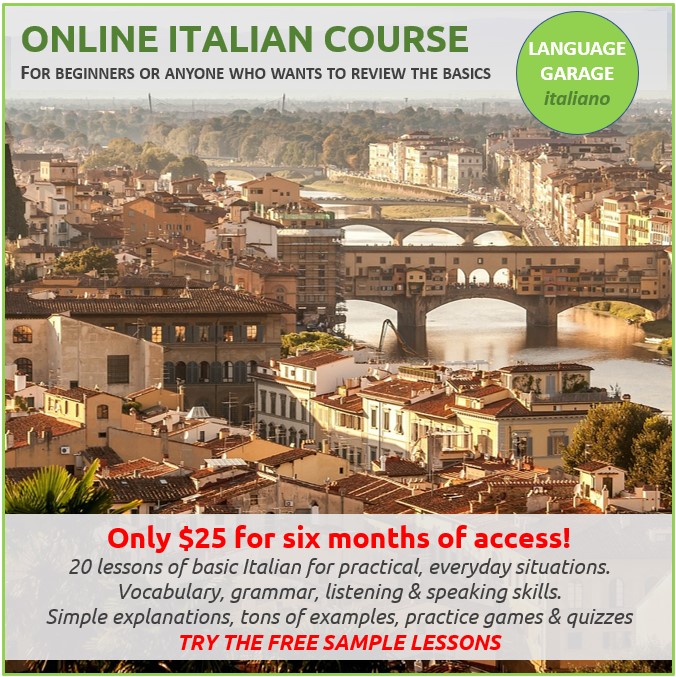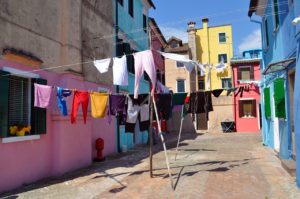Image by Engin Akyurt from Pixabay
Ciao! This post is a free sample of a lesson from our online Italian course. The beginner’s course includes all of the vocabulary from our basic mini-lessons, with full audio support by native speakers. The online course also includes simple explanations of basic Italian grammar, plenty of examples, and loads of practice exercises, quizzes, and games. You can check out sample lessons or enroll in the online course here.
In this post we’ll learn some basic vocabulary and grammar that you can use to describe things.
Di che colore è? What color is it?
Let’s start with colors: nero/nera black; bianco/bianca white; rosso/rossa red; blu blue; giallo/gialla yellow; verde green; marrone brown; grigio/grigia gray.
GRAMMAR TIP! Don’t forget that adjectives agree with the noun they describe in gender and number. So, a masculine noun is nero, bianco, or rosso, and a feminine noun is nera, bianca, and rossa. In the plural, that’s neri, bianchi, and rossi for masculine, and nere, bianche, and rosse for feminine. If the adjective ends in –e, it’s only got one singular form (verde, marrone) and one plural form (verdi, marroni). And if an adjective ends in something else, like blu, it’s just got that one form.
- Il cane è nero.
The dog is black. - Il gatto è bianco.
The cat is white. - La nostra macchina è blu.
Our car is blue. - La bandiera italiana è verde, bianca, e rossa.
The Italian flag is green, white, and red.
Bravo!
Now let’s look at several other important basic adjectives: buono/buona, bravo/brava good; cattivo/cattiva bad; grande big; piccolo/piccola small; bellissimo/bellissima beautiful; brutto/brutta ugly; vecchio/vecchia old; nuovo/nuova new; lungo/lunga long; corto/corta short; alto/alta high; basso/bassa low; vuoto/vuota empty; pieno/piena full; largo/larga wide; stretto/stretta narrow; duro/dura hard; morbido/morbida soft; difficile difficult; facile easy.
Notice that there are two ways to say good: buono and bravo. Buono is good in a general sense, and you can use it to describe a person, animal, or thing. Bravo means good in the sense of good at something, or talented at something, and it’s typically used with people. (That’s why some people shout bravo! or brava! at the end of a performance.)
- Questo libro è buono/cattivo.
This book is good/bad. - Questi libri sono buoni/cattivi.
These books are good/bad. - Questa canzone è buona/cattiva.
This song is good/bad. - Queste canzoni sono buone/cattive.
These songs are good/bad. - Il cantante è bravo.
The singer is good/talented. - Il film è vecchio/nuovo.
The film is old/new. - La città è bella/grande.
The city is beautiful/big. - La strada è larga/stretta.
The street is wide/narrow. - Il letto è duro/morbido.
The bed is hard/soft. - Il bicchiere è pieno/vuoto.
The glass is full/empty.
Do you want to learn Italian?
Check out our other posts on Italian language, culture, and more. And if you’re looking for convenient and affordable live Italian lessons with a real teacher, check out The Language Garage. Our lessons are given online in a virtual classroom, so it doesn’t matter where you live or work – we can come to you. And we have flexible options, with a free trial so that you can decide if there’s a fit. Check us out!






